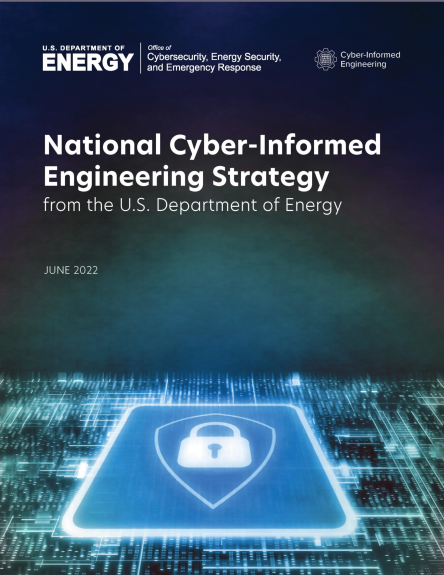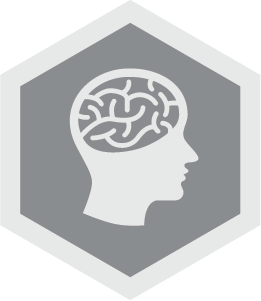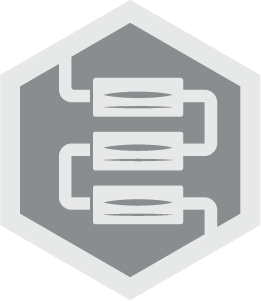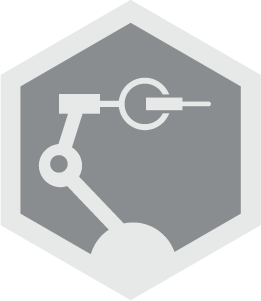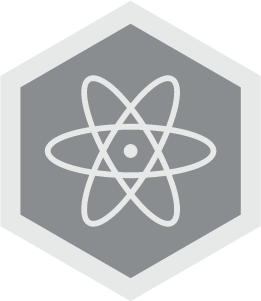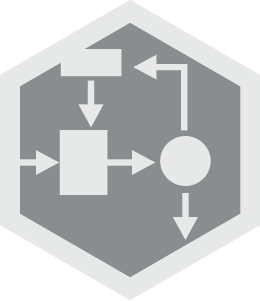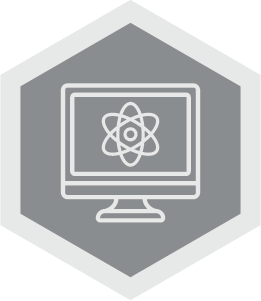Science & Technology Overview
Secure and Resilient Cyber-Physical Systems
Relying on its world-class research, development and demonstration (RD&D) capabilities and unique assets, INL secures our nation’s critical civilian infrastructure and military systems against complex and dynamic cyberthreats while increasing resilience to a variety of hazards and environmental changes. INL advances transformational approaches that address the true risks in cyber-physical systems and drive both security culture and technology change in critical systems engineering and operations.
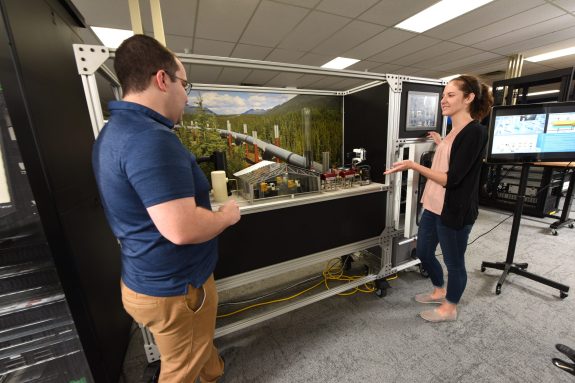
pipeline compressor station used to understand cyber-physical security
risks to critical infrastructure.
Formalizing and scaling cyber-informed science and engineering
INL recently led the development and publication of a new national Cyber-Informed Engineering (CIE) Strategy to create a nationwide paradigm shift in engineering to proactively protect the nation’s critical functions from cyberattack. Along with INL’s recently pioneered Consequence-driven, Cyber-informed Engineering (CCE) process, both CIE and CCE use design decisions and engineering controls to eliminate or mitigate avenues for cyber-enabled attacks. CIE offers the opportunity to “engineer out” risk throughout the design and operation life cycle, rather than add cybersecurity controls after the fact. Targeting engineers and technicians, CIE provides a framework for cyber education, awareness and accountability, and aims to engender a culture of security aligned with the existing industry safety culture. Initial CIE curriculum was developed by university partners Boise State University and Idaho State University and will scale nationally with partners such as Auburn University and University of Texas San Antonio as the CIE strategy is implemented. Link to book: Countering Cyber Sabotage: Introducing Consequence-Driven, Cyber-Informed Engineering (CCE)
Strengthening all-hazards physical and cyber critical infrastructure resilience
INL uses science- and engineering-based methods to advance the resilience of critical functions, components, systems, networks and interconnected complex infrastructure against natural, technological and human-caused threats and hazards. To enhance security of the digital supply chain, INL has established national leadership in the subcomponent illumination, testing and evaluation of equipment intended for use in critical infrastructure. INL partners with government, industry, academia and other national labs through INL’s Resilience Optimization Center specializing in system resilience and risk management providing resiliency analysis and optimized solutions to stakeholders.
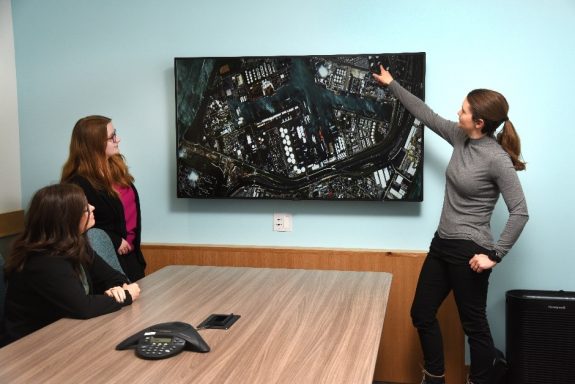
researchers discuss the applicability of convolutional neural
networks in object detection for critical infrastructure resilience.
Innovating enduring control systems cybersecurity
The Cybercore Integration Center provides unmatched expertise and state-of-the-art laboratories focused on control systems cybersecurity. The center facilitates collaboration with industry, academia and federal agencies focusing on developing innovative, threat-informed methodologies and enhanced full-scale testing facilities to drive unique cyber solutions for industrial control systems, minimizing the impacts from cyberattacks while mitigating losses. Through reverse engineering at scale (RE@Scale) RD&D, INL is pursuing security and resiliency by design methods and validation solutions that work across the digital engineering life cycle for critical systems after adversary actions.

INL creates educational tools to accelerate workforce development efforts and strengthen talent pipelines through new collaborative research programs and education models. The newly developed and first-of-a-kind education model, Industrial Control System Cybersecurity Competency Health and Maturity Progression (CYBER CHAMP), integrates and measures individual competencies, assesses organization readiness, and provides a single education process allowing any organization to define and mature its unique cybersecurity workforce.
Establishing a secure and resilient digital supply chain for critical infrastructures
INL leads cyber testing and evaluation of bulk power system protection equipment through Cyber Testing for Resilience of Industrial Control Systems (CyTRICS) to unify the nation’s energy supply chain analysis approach. CyTRICS encompasses new national efforts among collaborators to create and incorporate energy software and hardware bill of materials into cybersecurity risk planning.
To support net-zero objectives and energy security, INL leads efforts to secure the path to net-zero in partnership with industry consortiums like the Solar Energy Industries Association to accelerate resilience research and development for clean energy. For example, INL is demonstrating a proof-of-concept safety instrumented system for electric vehicle chargers that successfully detects cyberattacks against a high-power electric vehicle charger. The lab is conducting these demonstrations under the DOE-sponsored Electric Vehicle Secure Architecture Laboratory Demonstrations, a pilot project to develop best practices in operating cybersecure and resilient charging facilities to support expansion of electric vehicles as a share of the consumer and commercial markets.
The Cybersecurity Manufacturing Innovation Institute (CyManII) is creating the future state of cybersecurity with innovative and provably secure architectures across the manufacturing supply chain for multiple sectors including the energy systems industrial base. Led by the University of Texas at San Antonio, CyManII was established to transform American manufacturing by creating economically viable and pervasive cybersecurity for the digital supply chain and manufacturing processes to achieve measurable energy and emissions efficiency. Under CyManII, INL leads cybersecurity of industrial control systems and critical infrastructure and is developing cybersecure energy and emission quantification as part of its new secure manufacturing architecture.
Securing wireless communications and spectrum use as an enabler to critical systems
INL’s Wireless Security Institute RD&D accelerates adoption of secure and resilient wireless communications technology, secure dynamic spectrum access and sharing, and wireless broadband access across lifeline critical infrastructure sectors and select military systems. The Wireless Security Institute develops and validates 5G security protocols and data protection technologies and leads federal, academic and private industry research efforts. INL’s RD&D efforts focus on 5G device and network security analysis, cellular drone security and secure spectrum sharing architecture as well as new research into fundamental challenges surrounding 6G performance and security. In September 2022, INL opened the nation’s first 5G wireless test range focused exclusively on security testing, training and technology development. This extends INL’s expertise at the Wireless Test Bed to include the latest 5G capabilities, including support for software-defined, open radio access networks.
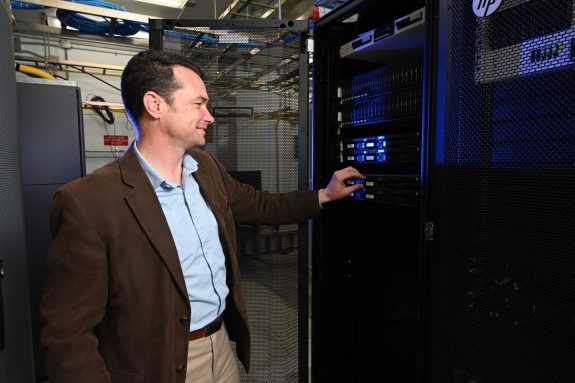
ADVANCED COMPUTER SCIENCE, VISUALIZATION, AND DATA
The ability to have a widely recognized role in advances in all applications in computational science and engineering. A core capability in these areas would involve expertise in areas such as programming languages, high-performance computing tools, peta- to exa-scale scientific data management and scientific visualization, distributed computing infrastructure, programming models for novel computer architectures, and automatic tuning for improving code performance, with unique and/or world-leading components in one or more of these areas. The capability requires access to (note: these resources do not need to be co-located) a high-end computational facility with the resources to test and develop new tools, libraries, languages, etc. In addition, linkages to application teams in computational science and/or engineering of interest to the Department of Energy and/or other Federal agencies would be beneficial to promptly address needs and requirements of those teams.
CYBER AND INFORMATION SCIENCES
The disciplines, technologies, and practices designed to protect, analyze, and disseminate information from electronic sources, including computer systems, computer networks, and sensor networks. A core competency in this area would involve recognized expertise in one or more of the following topics: cyber security, information assurance, information analytics, knowledge representation, and information theory, control systems design and engineering, embedded systems, reverse engineering, and advanced hacking techniques. This core competency would be applied to: the protection of information systems and data from theft or attack; the collection, classification, analysis, and sharing of disparate data; and the creation of knowledge from heterogeneous information sources; securing control systems integrated into critical infrastructure; and increasing security, reliability, and resilience of automated processes and systems.
DECISION SCIENCE AND ANALYSIS
Derives knowledge and insights from measured and modeled data sets to further the understanding of and tradeoffs among resource and technology options, to identify and quantify the risks and impacts of current and emerging technologies on environmental systems, and to assess the impact of market dynamics, human behavior and regulations, policies or institutional practices on the development and uptake of technology. Primary supporting disciplines include engineering, environmental science, applied math, finance, business, social and political science, and market and behavioral economics. This capability provides credible and objective information to support DOE and others to support strategic planning and program direction, policy formulation and implementation, efforts to remove market barriers to deployment and engagement with stakeholders.
LARGE-SCALE USER FACILITIES/ R&D FACILITIES/ADVANCED INSTRUMENTATION
The ability to conceive, design, construct and operate leading-edge specialty research facilities available to universities, industry, and national laboratories customers to conduct groundbreaking research and development activities and/or ‘at scale’ testing and demonstration of technology. This includes the ability to effectively manage construction of $100 million or greater one-of-a-kind scientific facilities, and to host hundreds to thousands of U.S. and international users in addition to carrying out world-class research at the facility itself. The ability to conceive, design, build, operate and use first-in-class technical instruments intended for a particular research purpose, often requiring the material expertise of multiple scientific disciplines. Instrumentation that can be created by a small number of individuals or that would sit on a laboratory benchtop is not considered part of this core capability.
MECHANICAL DESIGN AND ENGINEERING
Applies the principles of physics, mechanics, and materials science to analyze, design, test, validate, and enable operation of advanced engineered systems, machines, and tools. Includes equipment used to move or extract energy bearing materials (e.g., oil, gas, coal) or from moving fluids (e.g., water, wind, steam), as well as equipment used to convert energy to useful services (e.g., mobility, home heating and cooling, robotics, imaging devices, etc.) or to manufacture products. Primary supporting disciplines include physics, materials science, aerospace engineering, mechanical engineering, chemical engineering, electrical engineering, and computational science.
NUCLEAR ENGINEERING
The ability to use a broad range of facilities, instrumentation, equipment and, often, interdisciplinary teams that apply the knowledge, data, methods, and techniques of nuclear engineering, mechanical engineering, nuclear reactor physics, measurable science, and risk assessment to missions of the Departments of Energy and Homeland Security. The elements of this capability are often brought together in unique combinations with those of other disciplines to address high priority needs such as new and improved energy sources and systems; advanced instrumentation for nuclear systems; accelerator science and technology; and development of methods and systems to assure nonproliferation and combat terrorism.
POWER SYSTEMS AND ELECTRICAL ENGINEERING
Applies understanding of electromagnetic phenomena to design and engineer circuitry, electrical and electronic devices and equipment, sensors, instruments, and control systems to address the efficiency and reliability of power transmission and distribution systems, and the interface of the grid with variable generation and modern loads. Primary supporting disciplines include electrical engineering, power systems engineering, computational science, and materials synthesis, characterization, and processing.
SYSTEMS ENGINEERING AND INTEGRATION
The ability to solve problems holistically from the concept and design phase to ultimate deliverable and completion phase, by synthesizing multiple disciplines, and to develop and implement optimal solutions. The ability to develop solutions that address issues of national energy and environmental security. Areas of application of this capability include development of programs in energy supply, storage, transportation, and efficiency; and deployment of novel solutions to materials and sensor problems in fields of interest to the Department of Energy and/or the Department of Homeland Security.
COMPUTATIONAL SCIENCE
The ability to connect applied mathematics and computer science with research in scientific disciplines (e.g., biological sciences, chemistry, materials, physics, etc.). A core capability in this area involves expertise in applied mathematics, computer science and in scientific domains with a proven record of effectively and efficiently utilizing high performance computing resources to obtain significant results in areas of science and/or engineering of interest to the Department of Energy and/or other Federal agencies. The individual strengths in applied mathematics, computer science and in scientific domains in concert with the strength of the synergy between them is the critical element of this core capability.

